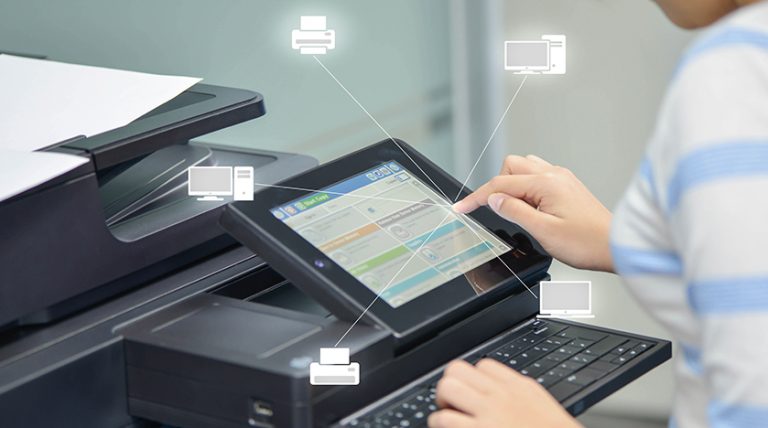

*In order to include duplicate records you have to use UNION ALL instead of UNION.
#Collate printer full
*Depending on how many duplicate rows you want to print, the UNION ALL operator may have to be used more than once and placed between the same SELECT statement. Answer (1 of 2): When printing a document: Collate means that if you print multiple copies (example: 5) of it, each copy will come out already sorted into a full package from front to back. The data returned is stored and shown in a single table. You can use the SQL UNION ALL operator to combine the result sets of 2 or more SELECT statement (FIGURE 1-3). In BarTender this can be done with a Custom SQL statement (FIGURE 1-2) and it doesn't require to make any change at your database file or table stored on the database system. However, even though such option is not natively supported in BarTender, below is discussed a possible method to overcome such limitation.įor example, supposing the table 'A' shown in the the FIGURE 1-1 is the current table linked to a BarTender document and, the table 'B' is a copy of the table 'A', if you combine one to each other, you'll be able to print all records of each copy before printing the second copy. Let's assume that your BarTender document is currently linked to a SQL Server Database that consists of a table with 3 rows and that you want to print multiple copies for each record in what order my labels will be printed by BarTender? Applicable toīased on the number of copies requested, BarTender will print all the copies of record 1, then all the copies of record 2 and so on for each selected record. So, if you've specified to print two copies per record, in this case, the printout outcome will be in this order: 1, 1, 2, 2, 3, 3īarTender does not support collate printing, that means there isn't any option to select that makes BarTender running the print job in its entirety once and then repeat, so to get the following sets of copies: 1, 2, 3, 1, 2, 3 In these scenarios, you will likely want piles of each page of the document so that they are easy to pick up or hand out.įor more useful printing techniques and tips, visit. Printing un-collated will ensure that all of the copies of a single page are printed together. For example, it is best to print un-collated if you have a document such as: Click on the Print button to print the document. (You can select either Collated or Uncollated.) 5.
#Collate printer driver
For printing methods, see the printer driver Help.

If the PCL 5c printer driver is used, it can be specified in the Setup tab. If the PCL 6 printer driver is used, Collate can be specified in the Output Settings menu on the Detailed Settings tab. Examine the controls in the Settings area. Collate stores data transmitted from a computer to the machines memory or hard disk drive. Though you will likely want most of your documents collated, there are several instances when printing un-collated is the better choice. Using the Copies control, specify the number of copies you wish to print. When to Collate Your DocumentĬollating is most often used when you are printing multiple copies of a multi-page document. If the document you are printing is only one page in length, it does not matter if you have the collate feature enabled, as it will not affect how your document is printed. Examine the controls in the Settings area. The collate option will typically be denoted by a diagram of three pieces of paper stacked on top of one another. Using the Copies control, specify the number of copies you wish to print. Click “File” and select “Print.” A new window will appear.Once you are ready to print your document, you can ensure it prints collated by following a few simple steps: While collating by hand can be tedious and lead to mistakes in your document, collating on your printer gives you the peace of mind of knowing that your document will be put together efficiently and correctly. If you leave the document un-collated, the printer will print all three copies of page 1, followed by all three copies of page 2, and so forth: 111, 222, 333, 444, 555. Selecting the collate option on your printer does not alter the number of pages that you print it simply organizes them in a different configuration.įor example, if you are printing three copies of a five-page document, the collate setting will ensure that the printer will print one copy of each page, and then repeat: 12345, 12345, 12345. In printing terminology, collating is the process of combining multiple sheets of paper to create a set or, more simply, printing a document in order. 4 When to Leave Your Document Un-CollatedĬollate is defined as collecting and combining text, information, or data. When printing copies of multi-page documents, select Collate to print complete sets in sequential page order. When multiple sets of copies are printed, the paper output position of each set is staggered to help you locate the.


 0 kommentar(er)
0 kommentar(er)
